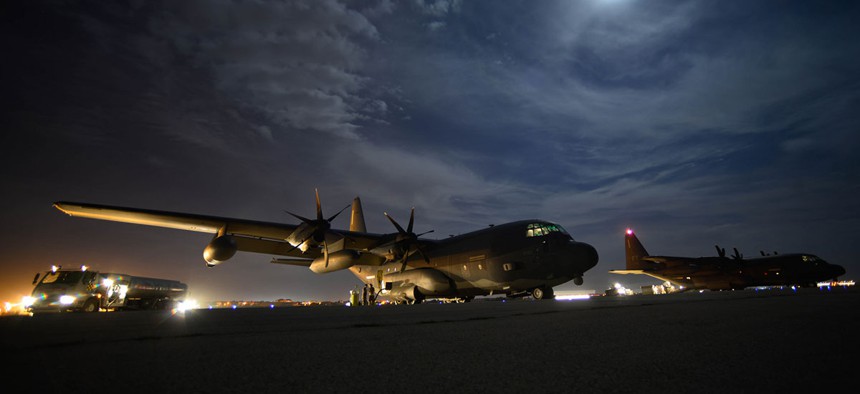The Intelligence Picture Over Iraq and Syria Has Gotten Much Cloudier
The leader of Air Combat Command says new players on the battlefield are complicating the air fight against ISIS.
A U.S.-led coalition may have the Islamic State on the run, but the fog of war over the smoldering battlefields of Syria and Iraq is far thicker than it was a year ago.
“It’s gotten significantly more complex,” says U.S. Air Force Gen. Hawk Carlisle, who leads Air Combat Command.
The reason: too many players in the field with too many agendas.
“The Russians, what they’re doing there; the Syrians, what they’re doing there; different agreements with different crowds” all add to the difficulty and confusion, Carlisle told reporters at the Air Force Association conference outside Washington, D.C., on Tuesday.
A proposal to better coordinate U.S. and Russian air strikes — to go beyond the current agreement to simply deconflict airspace — has been set back by recent events.
Last Saturday, the Pentagon announced that U.S. aircraft may have accidently struck a group of Syrian soldiers. On Tuesday, at least a dozen people died when unidentified aircraft hit a Syrian Red Crescent convoy. U.S. officials put the blame on Syria and Russia, which deny it.
“We’re going to do an investigation,” Carlisle said about the convoy strike. “We’re going to look at all the intel, glean information from the Russians as well…The first bit of information is almost always wrong. We will be very diligent about uncovering all there is to uncover.”
Asked whether the proposed U.S.-Russian information-sharing agreement could be resurrected, Carlisle said, “I don’t see it in the cards in the near future.”
The same goes for proposed joint operations: “We’ll be in de-confliction mode, not joint operations.”
Still, Carlisle said, U.S. and Russian operations directors would remain in daily contact.
“We talk to them everyday from the CAOC,” or combined air information center, he said.
Those discussions occur daily between colonels and weekly between generals, he said.
“They are sometimes very forthcoming, other times less so,” he said. “The Russians are the Russians.”
The fight against ISIS, even a year ago, seemed so much more straightforward. Speaking at last year’s Air Force Association conference, Carlisle described how U.S. forces used a photo posted by an ISIS fighter to put bombs on target in less than a day.
"The [airmen are] combing through social media and they see some moron standing at this command," the ACC commander said. "So they do some work — long story short, about 22 hours later through that very building, three JDAMs take that entire building out.”
Today, he said, he’s happy to target extremists who are foolish enough to post targeting details on social media.
“We do everything, we try everything. There’s no stone unturned,” he said.
But he anticipated the intelligence environment remaining “challenging” through the fall.




